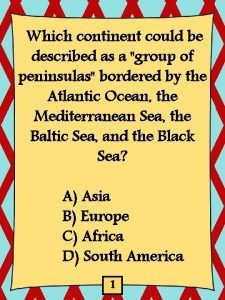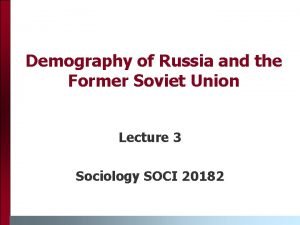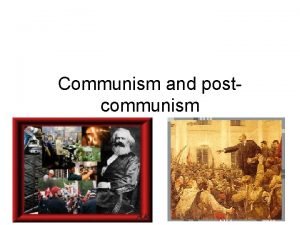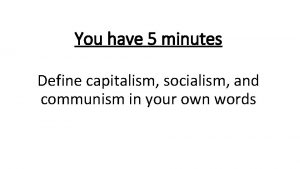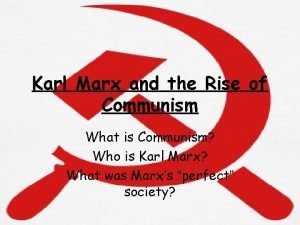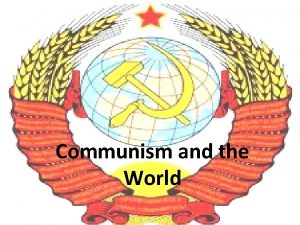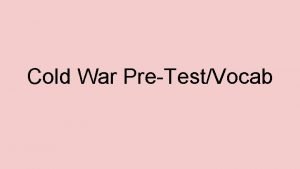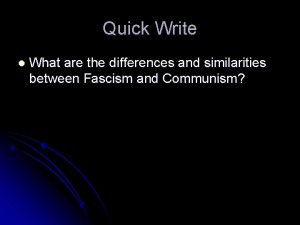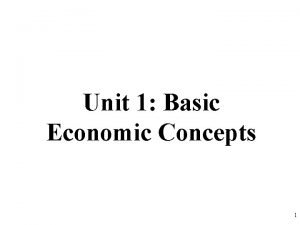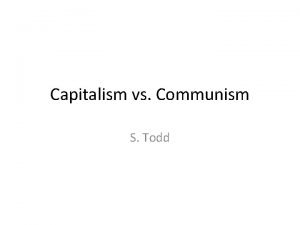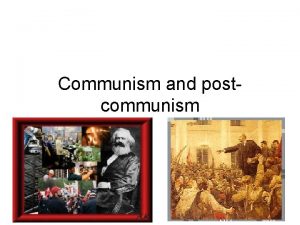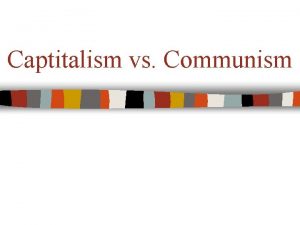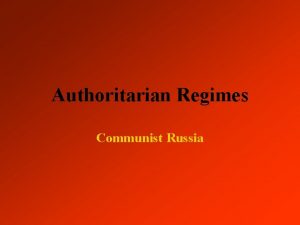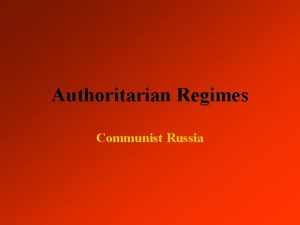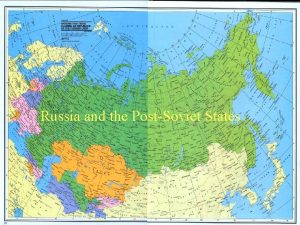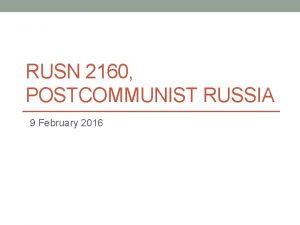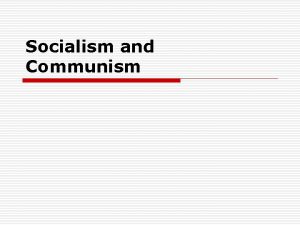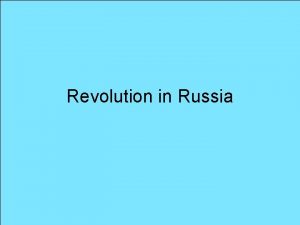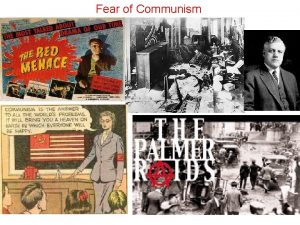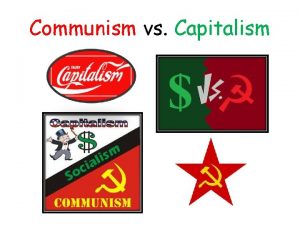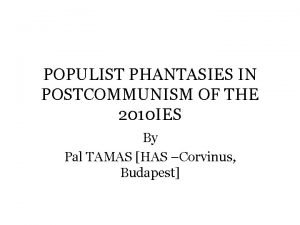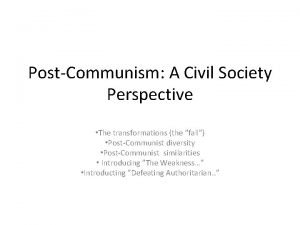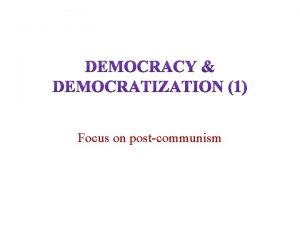Communism and postcommunism Postcommunist states State Population Russia



















- Slides: 19

Communism and postcommunism

Post-communist states • State Population • Russia 142, 893, 540 • Poland 38, 536, 869 GDP per capita $12, 100 (P. P. P. ) $14, 100 (P. P. P. )

Communist states under reform • State Population GDP per capita • P. R. C. 1, 313, 973, 713 $7, 600 (P. P. P. ) • Vietnam 84, 402, 966 $3, 100 (P. P. P. )

Communist states • State Population GDP per capita • Cuba 11, 382, 820 $3, 900 (P. P. P. ) • D. P. R. K. 23, 113, 019 $1, 800 (P. P. P. )

Historical origins of the regimes • October Revolution in Russia (1917) – Union of Soviet Socialist Republics • East Europe and North Korea after WWII • Chinese revolution (1911 -1949) – Chinese Communist Party • Vietnamese revolution (1945 -1975) • Cuban revolution (1959)

“Arc of Containment”

A Soviet camp? • Warsaw Pact was established in 1955 in Eastern Europe to counter NATO • divisions within world communist movement – Albania and Yugoslavia broke free from Soviet control after the late 1940 s – USSR-PRC ideological and military conflicts after the late 1950 s

3 pillars of communist regime • Marxist ideology – Karl Marx (1818 - 1883) • Communist Party – Lenin (1870 - 1924) • command economy – Stalin (1879 - 1953)


Leninist party • Party monopoly – of the “correct ideology” – of political power • Communist Party – proletarian vanguard – alone could comprehend and represent the objective long-term interests of the masses

The Party State • Communist Party held monopoly on real decision-making power – government responsible for implementation • Communist Party leaders – cult of personality around Stalin – de-Stalinization after 1956 – collective leadership

Organization of Leninist party • nomenklatura – Party control of government – appointment to key positions • “democratic centralism” – centralized decision-making • internal discipline

Organization of Leninist party • hierarchy – General Secretary – Secretariat – Politburo – Central Committee – Party Committees at local levels • republics, provinces, counties, etc. – Party Committees/Branches in firms etc.

Command economy • state ownership of property • state management of firms • central planning

Command economy • Early successes – mobilization of resources – heavy industry – reduce poverty • later problems – consumer goods shortage – technologically backward – international competition

Reforms • Deng Xiaoping’s “reform and opening up” since late 1970 s

Gorbachev’s Reforms (1985 -91) • glasnost – openness in the political system • perestroika – economic restructuring • foreign policy – improved relationship with the West – transformed relationship with East European states

Collapse of communism (1989) • Democratization in East Europe – Poland, Hungary, East Germany, Czechoslovakia, Romania, etc. • pro-democracy student movement in China – Tian’anmen Square • breakup of the Soviet Union – 1991

 Which number on the map represents the english channel?
Which number on the map represents the english channel? Population pyramid russia
Population pyramid russia Russia population
Russia population Chapter 4 population ecology test answer key
Chapter 4 population ecology test answer key Population ecology section 1 population dynamics answer key
Population ecology section 1 population dynamics answer key Population ecology section 1 population dynamics
Population ecology section 1 population dynamics Chapter 4 section 1 population dynamics study guide answers
Chapter 4 section 1 population dynamics study guide answers Buffalo county sd population pyramid
Buffalo county sd population pyramid Slave states free states
Slave states free states Southern states of america
Southern states of america Big states vs small states guard against tyranny
Big states vs small states guard against tyranny Communism and capitalism dbq answer key
Communism and capitalism dbq answer key Difference between marxism and communism
Difference between marxism and communism Domino theory map
Domino theory map Pretest communism and the cold war
Pretest communism and the cold war Fascism similarities and differences
Fascism similarities and differences Communist meaning
Communist meaning Communist vs socialist
Communist vs socialist Capitalism versus communism
Capitalism versus communism Sismaps
Sismaps
